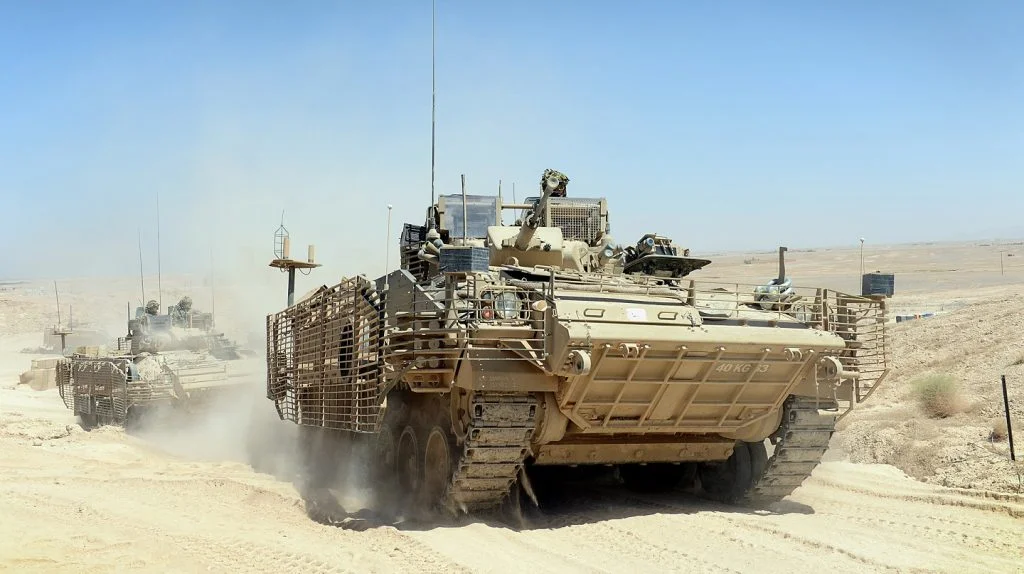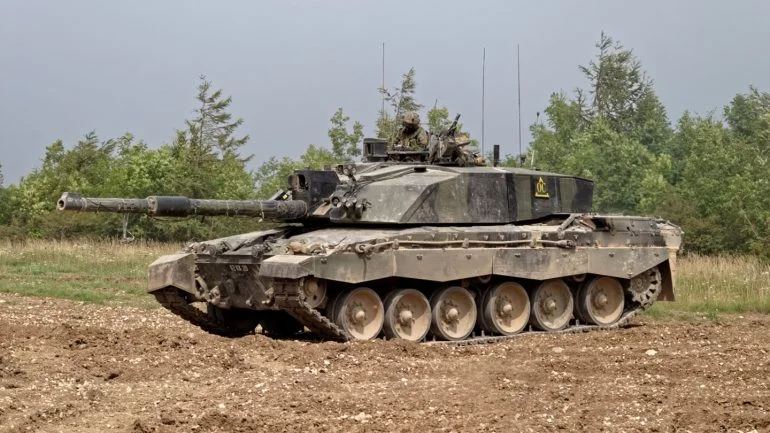La Guerra en Ucrania ha mostrado como la proliferación de pequeños drones letales del tipo FPV (First Person View), se ha convertido en una gran amenaza para las fuerzas terrestres y en especial para las formaciones blindadas. El Ejército Británico, que ha enviado 14 Tanques de batalla (MBT) Challenger 2 a Ucrania como parte de la asistencia militar, ha confirmado la destrucción de al menos uno de ellos en combate. Esa experiencia, sumada a bajas similares en otros MBT como los Leopard 2, ha motivado el desarrollo y experimentación de diferentes alternativas activas y pasivas, para la protección para los tanques de batalla y los vehículos de combate de Infantería (IFV). Entre ellas, se evalúa equipar a los Challenger con jaulas antiidrones del tipo “Cope cages”. Una solución básica y provisoria pero de rápida implementación, hasta que se disponga de sistemas más sofisticados y efectivos contra este tipo de amenazas.
The UK is testing the efficacy of so-called ‘cope cages’ on British Army Challenger 2 main battle tanks (MBT), as combat experiences in the Ukraine-Russia war highlight the vulnerability of armoured vehicles to the new era of small drone warfare on the battlefield.
Information revealed at DefenceIQ’s International Armoured Vehicles exhibition and conference, which took place from 21-23 January, detailed some of the methods that the British Army was looking at the defeat small drone threats, including soft kill countermeasures as well as hard deterrents, such as cope cages.
During the show, it was disclosed that cope cages were under assessment, looking at specific capabilities such as obscuration, drone flight path interference, and physical protection. Design considerations include weight, robustness, function, and deployment.
It is understood that cope cage trials are ongoing on the Challenger 2, and potentially other amoured vehicles, at an Army Training Unit (ATU) site. These trails are examining areas like vehicle function and sightlines, crew ingress and egress, stowage, and maintenance tasks.
In addition, technical trials are ongoing to determine threat impact and implications to the host platform’s signature.
The UK is currently in the process of upgrading its 148 of its Challenger 2 MBTs to the Challenger 3 standard, incorporating a new turret and main gun system. It is thought the Challenger 3 could feature new composite armour, as well as fielding an active protection system.
However, it is unclear whether there are any plans to test cope cages on the Challenger 3 when it begins to enter service, with its initial operating capability not expected until 2027.
Ukraine is an operator of the Challenger 2 tank, which has seen active combat against Russian forces, with at least one vehicle confirmed to have been destroyed on operations. The Sultanate of Oman is also an export customer of the Challenger 2 MBT.
What is a cope cage?
The use of small, first-person-view (FPV) drones, fitted with a variety of explosives and munitions, in the Ukraine-Russia war has had a significant impact on attrition rates of military and armoured vehicles.
Social media outlets are flooded with videos showing small FPV drone use, which are often deployed in teams with a spotter drone to direct strikes against opportune targets.
Militaries around the world are also waking up to the role that FPV drones will play on the battlefield, with countries establishing dedicated units within their armed forces to develop and eventually field such capabilities.

Given this proliferation, militaries are in a race to find cost-effective ways to protect or deter such attacks using a variety of means. At its most basic, cope cages can physically prevent a munition from impacting on a weak point on an armoured vehicle, such as the engine bay or open hatch.
UK operations in Iraq and Afghanistan in the 2000s saw the widespread use of bar armour around the sides of armoured vehicles in order to affect a premature detonation of munition such as RPGs.
A cope cage takes this one step further, with particular emphasis on bar armour covering the turret roof, while extreme examples also see the armoured vehicle operating fully inside an ablative shell.
Fuente: https://www.army-technology.com


